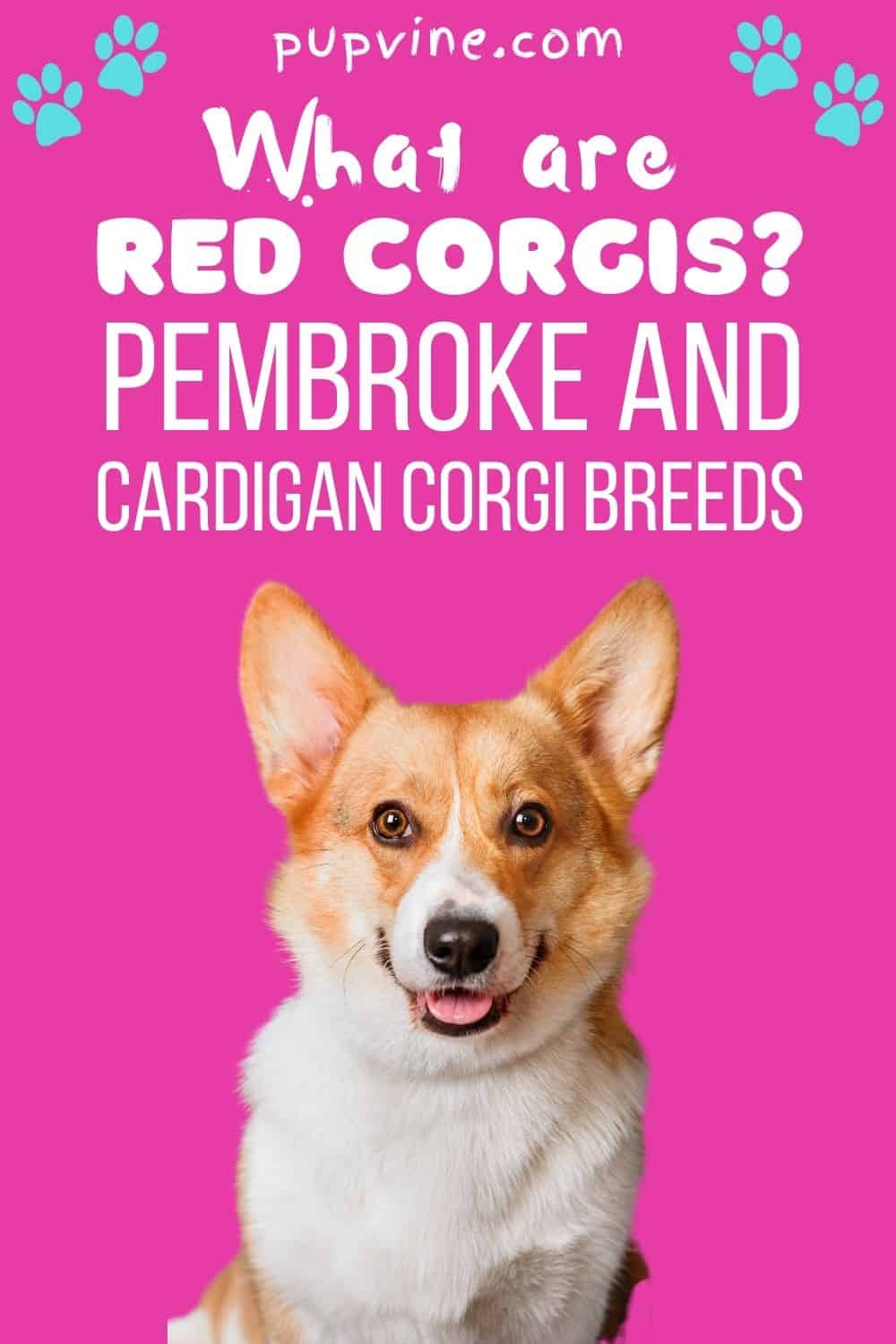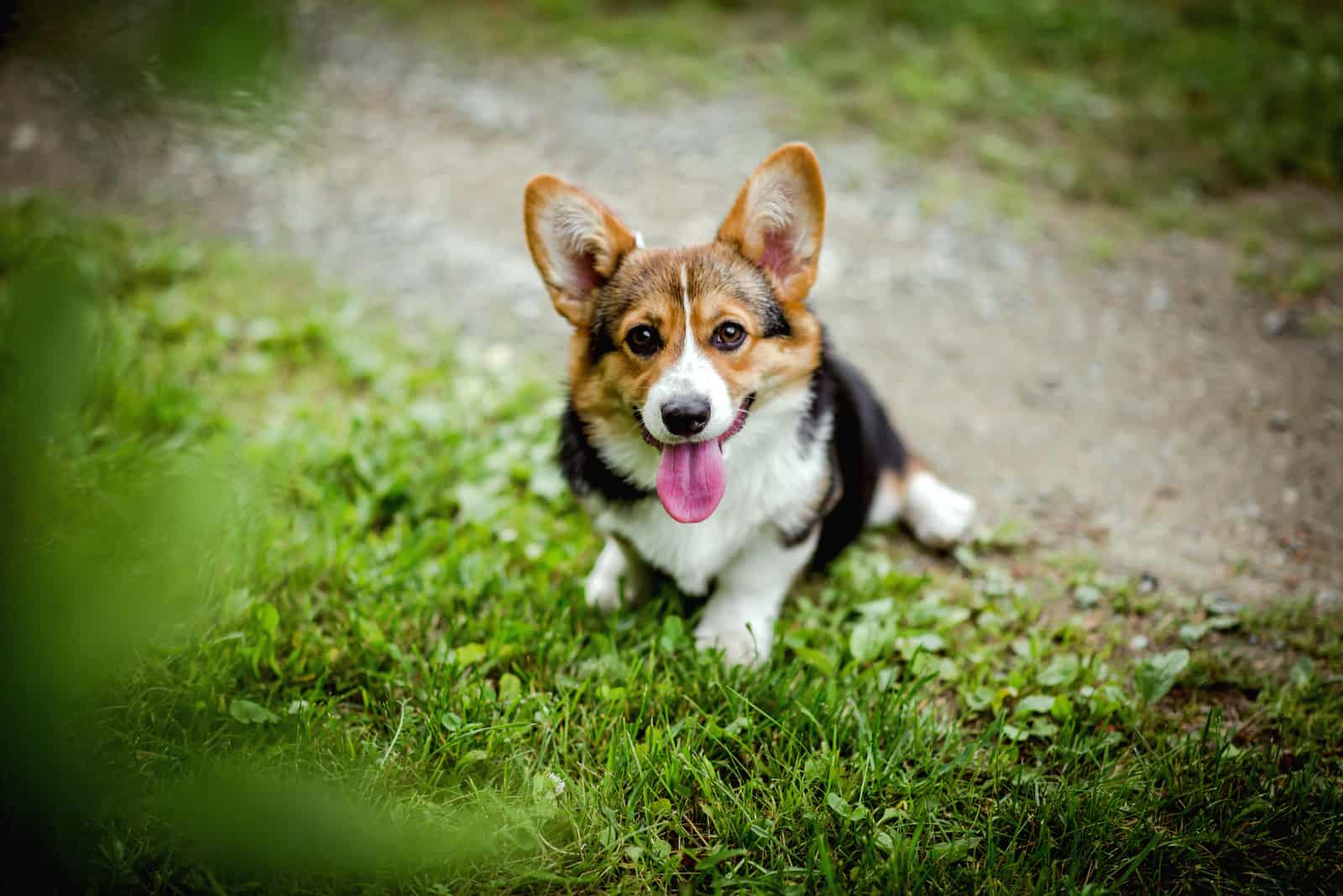It is difficult to know just how long ago humans domesticated the gray wolf, but research suggests that it was at least 14,000 years ago, although it could be as much as 40,000 years.
During this time, hundreds of different breeds have been produced, each with its own traits and characteristics. This was originally done to provide working dogs that were suited to different roles. However, these days, it is usually for the dog’s appearance and personality, as well as to produce show dogs that reflect the breed standard according to bodies such as the American Kennel Club (AKC).
When we look at these breeds now, it is amazing to think that they are all related to their distant lupine ancestors, although some still have a marked wolf-like appearance. The majority of breeds are relatively modern, arriving in the last two centuries or so. Others are far older, with a long and fascinating history that few people are aware of.
The Corgi is one of these breeds, which is why we’re showcasing them here, with a special focus on the red Corgi.
What Are Corgis? A Brief History Lesson
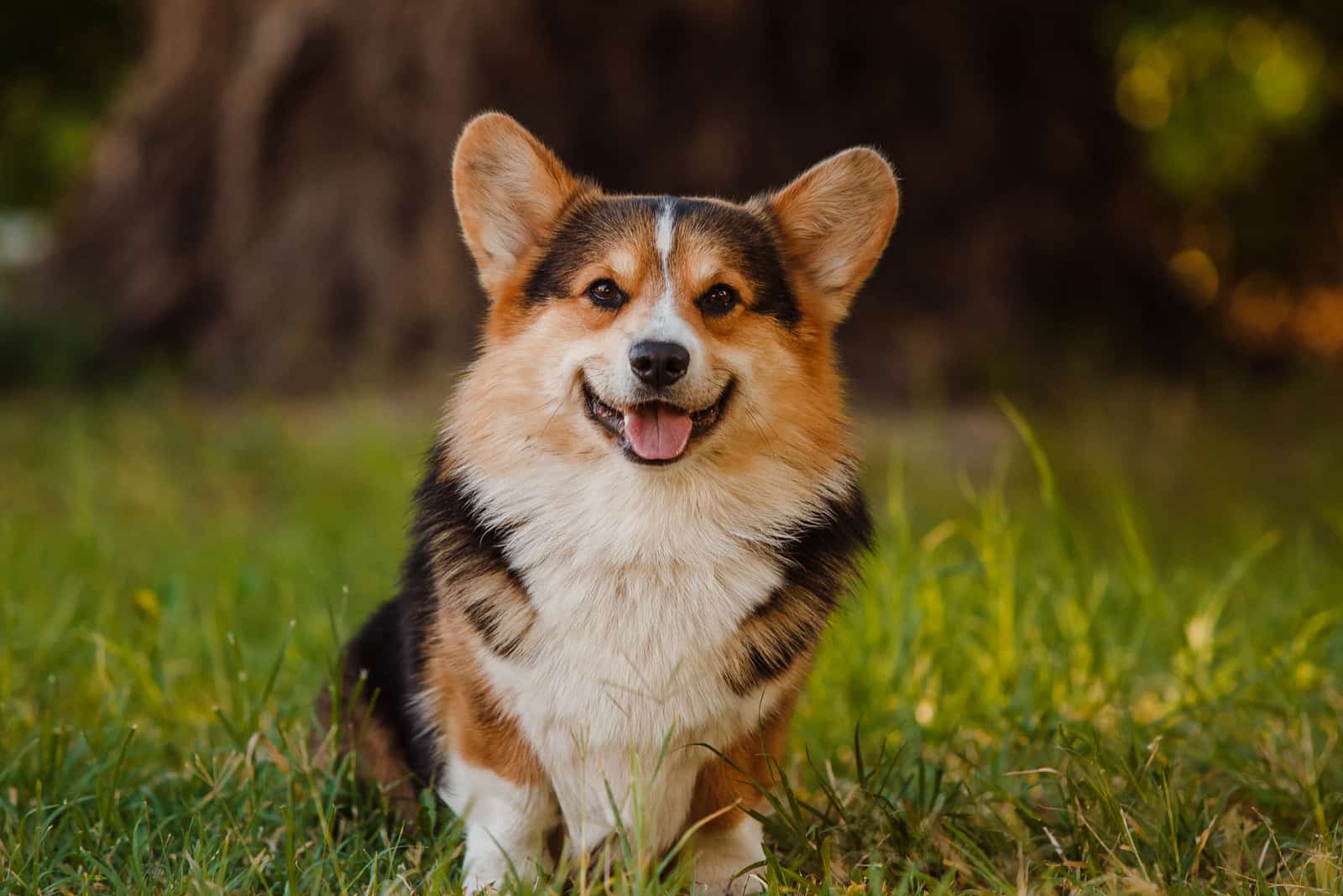
The origins of the Welsh Corgi are shrouded in uncertainty, with several suggestions as to how they came to be. Some historians suggest that they were around as far back as 1200 BC, carried across to Wales from the European mainland by Celtic tribes. The name Corgi itself is said to be derived from the Celtic words cor (dwarf, or small) and gi (dog), although the original word was more like kergie.
Others maintain that Vikings contributed to the breed with their valhunds or that Flemish weavers settling in Wales brought the Corgi (or a similar breed) with them.
What we do know for sure is that these loyal, affectionate, short-legged dogs have been with us for at least 1,000 years, mainly found in Pembrokeshire and Cardiganshire in Wales.
At the time, much of the land was devoted to cattle farming, which meant that herding dogs were in great demand. The Corgi was ideal for this task, being low enough to avoid the lashing hooves as they drove the cattle to market or new pastures. The dogs were able to dart in and out, delivering a quick nip to the heel of any beast too slow or wandering from the path.
With many farms and crofts being in remote areas and therefore prone to attack from outlaws or wild animals such as lynx or wolves, the Corgi’s deep, persistent bark was a good deterrent or at least a warning that all was not well.
Having proved their worth as a general farm dog for hundreds of years, they received a huge boost in popularity in the twentieth-century when Queen Elizabeth II received a Pembroke Corgi as a birthday present. She instantly fell in love with them, has owned at least 30 during her reign, and still has one or two of these faithful dogs to this day that were recently given as a gift two years after her last ones died.
It is possible that the breed would have become extinct had this not happened, as cattle farming was rapidly being replaced by sheep farming, to which the Corgi is not suited.
There are, in fact, two separate breeds: the Cardigan Welsh Corgi and the Pembroke Welsh Corgi. They have been interbred over the years and were even considered one breed until 1934.
What Do Corgis Look Like?
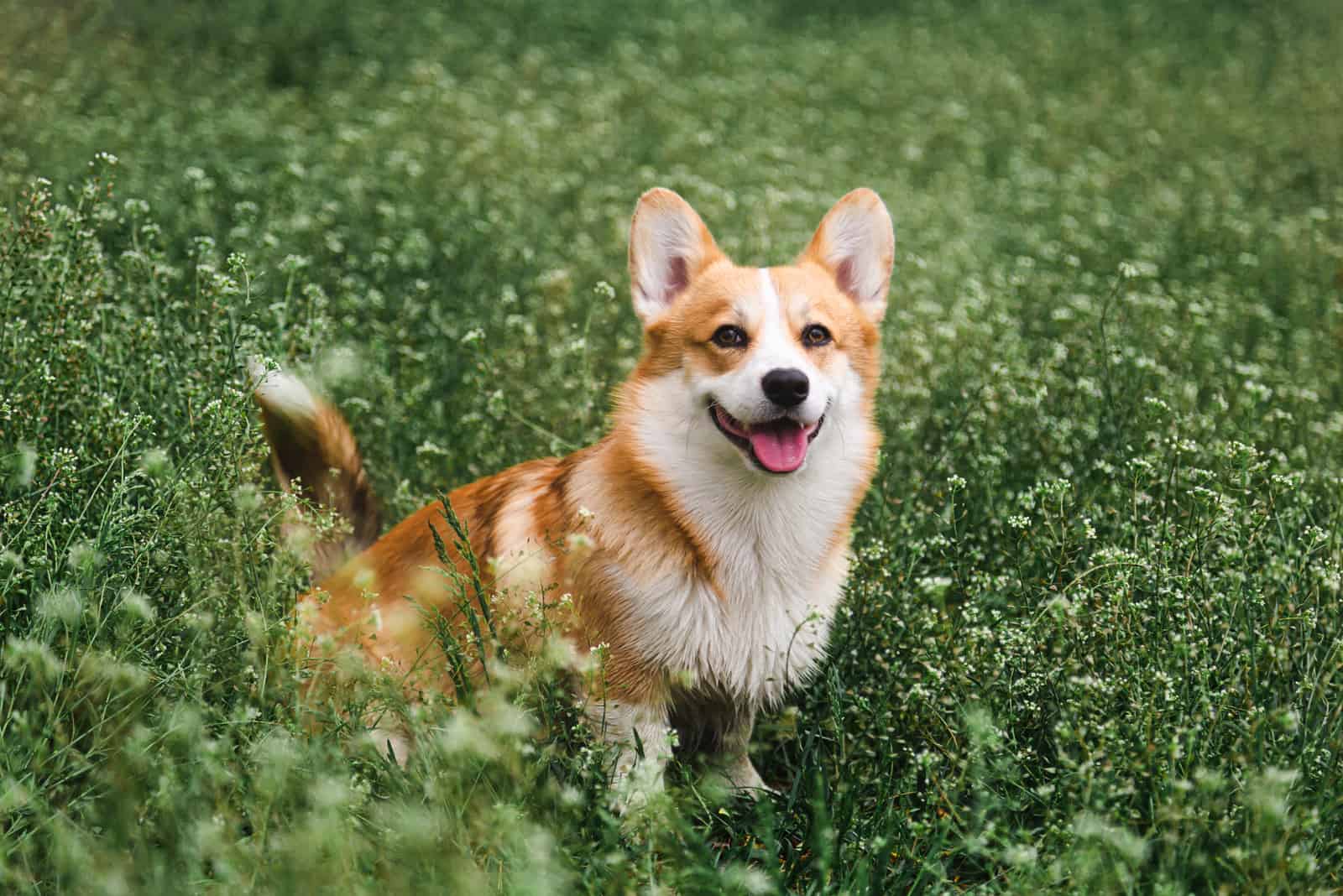
The two breeds, named for the Welsh counties they originated from, share remarkable similarities due to crossbreeding at certain times but are regarded today as being separate breeds.
Here’s a quick guide to help you distinguish between the two:
The Pembroke Corgi
• Traditionally found without a tail (either docked, which is increasingly regarded as cruel and unnecessary these days, or ‘bobbed,’ being born naturally without a tail) although tails are often seen now.
• They can weigh up to 13.6 kg (30 lbs).
• Their ears are more pointed.
• Their coats are generally found in these colors with a white trim: red, sable, fawn, red-headed tricolor, and black-headed tricolor.
The Cardigan Corgi
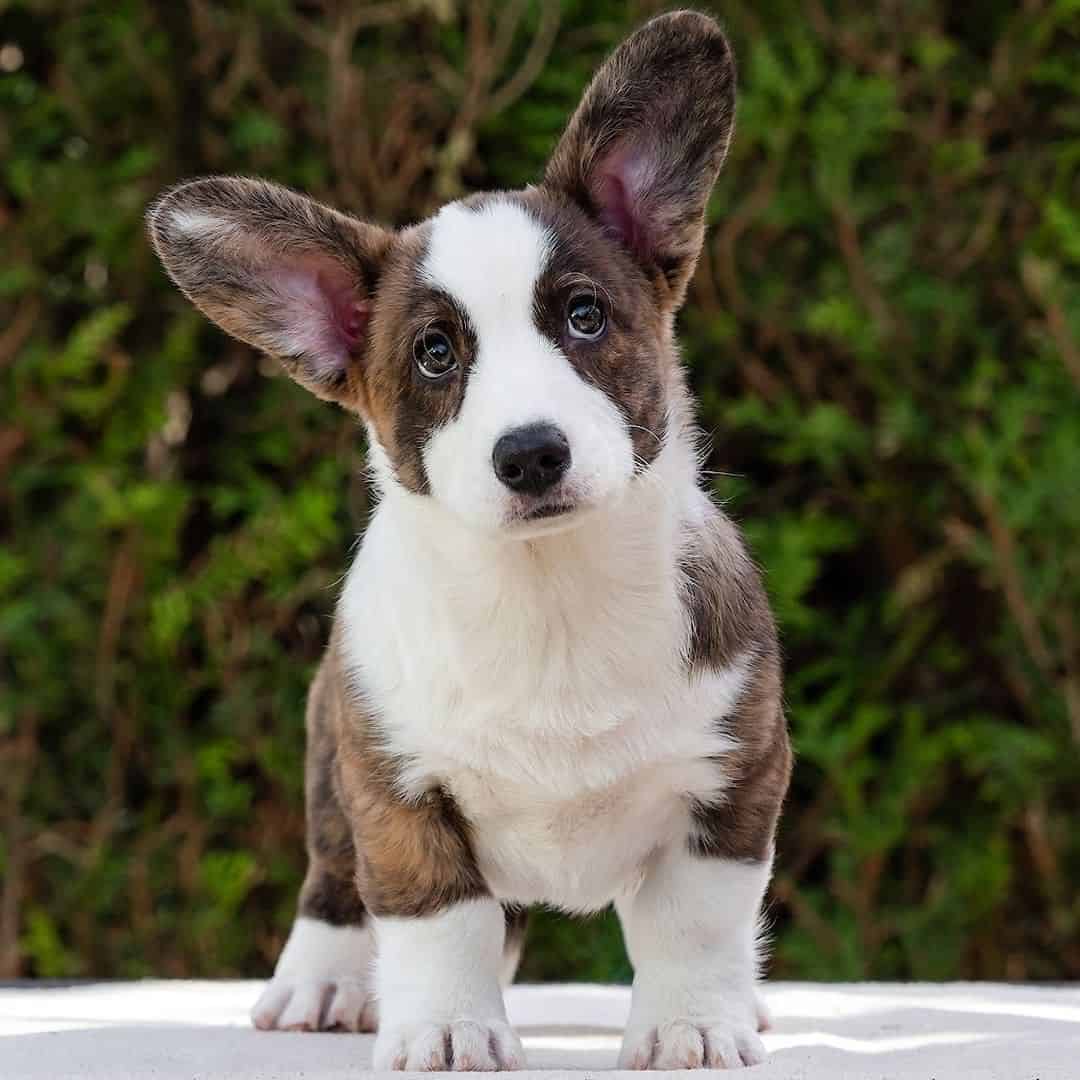
Photo from @inspiredbycardigans
• Their tails are never docked or bobbed.
• They can weigh up to 17.2 kg (38 lbs).
• They have rounded ear tips.
• Their coat colors include black, blue merle, brindle, red, and sable. This can be mixed with white markings, but it shouldn’t cover more than 50% of the body, according to the breed standard.
Both breeds are stocky, with short, stumpy legs, a long muzzle, and large ears. They measure between 25–33 cm (10–12 ins) at the withers and 56–66cm (22–26 ins) in length.
What Are Corgis Like?
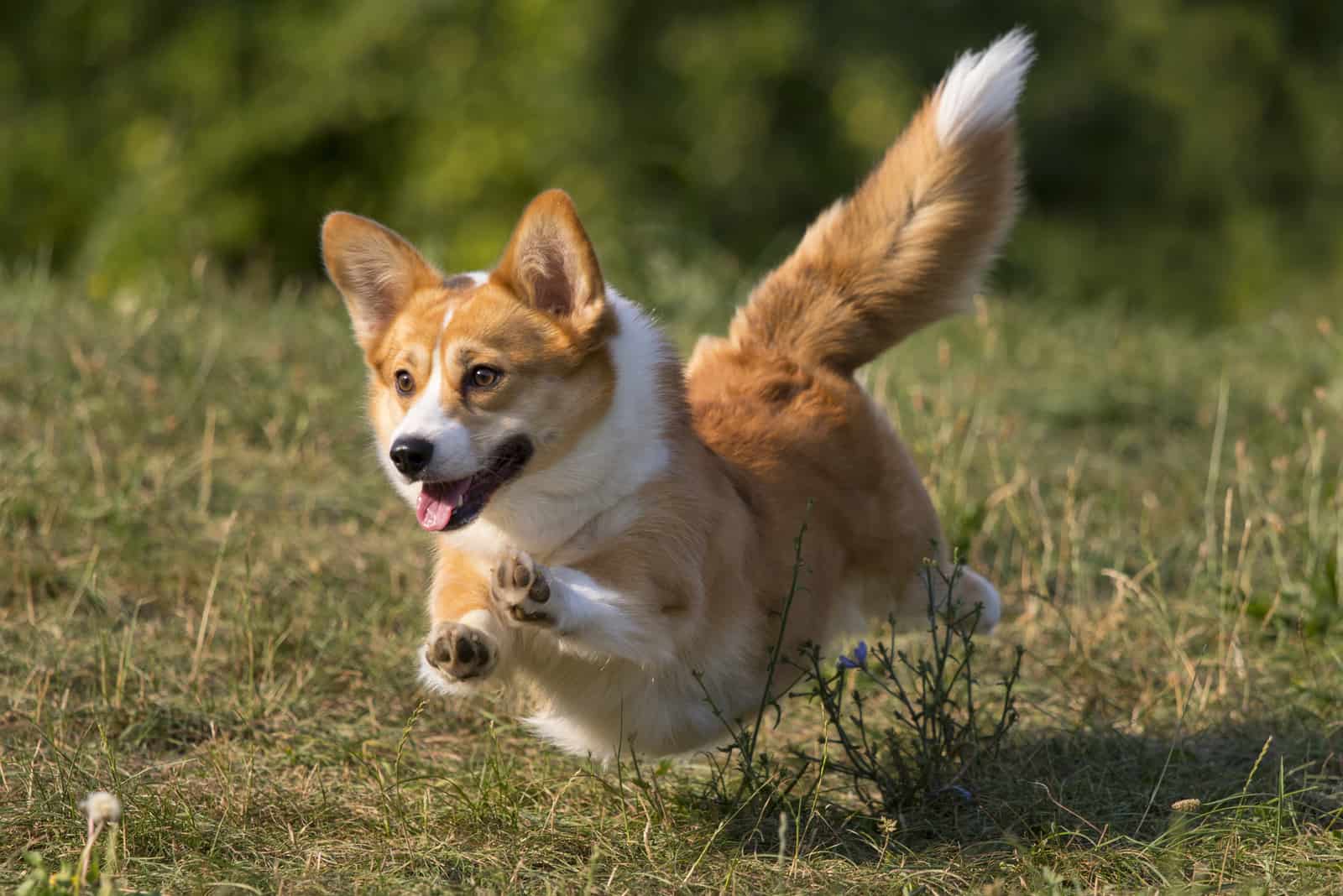
In terms of personality, both breeds just love companionship and want to be around you. They especially like children and are equally as smart as each other.
The major difference in character between the two breeds is that the Pembroke Corgi is outgoing, while the Cardigan Corgi is more laid back.
Both breeds are happy, cheerful animals and will keep you entertained with their comical behavior and sense of humor at times. Cardigans tend to be independent and loving, while Pembrokes are more friendly and affectionate.
All Corgis have a lot of energy and will chase after a ball or stick at surprising speed for a creature with such little legs. Despite all that energy, they don’t enjoy long runs and will be happiest with playtime in the yard or park or a couple of walks a day.
Aside from playtime, they love being kept occupied and active. Give them a job to do, and they’ll be happy as anything and love you all the more!
You may already be aware of the issue with Corgis and barking. It’s just something they do. While it does make them suitable as watchdogs, it can become annoying – if not to you, then possibly to your neighbors! The best way to handle this is through training, beginning as soon as possible. You might have a battle on your hands, as they can sometimes be stubborn, but as they’re also highly intelligent, they should soon begin to enjoy the process.
With a bit of patience, firmness, and some gentle persuasion, you can usually get the message across.
It probably won’t stop them from barking when the mood takes them, but a well-trained dog will be more likely to take notice when you give them a command.
Training and socialization can also help with aggressiveness towards other dogs and the instinctive tendency to nip that some dogs retain from their cattle-herding ancestry.
You should bear in mind, though, that each dog has its own personality and character and that some traits will show themselves more than others.
What’s Special About The Red Corgi?
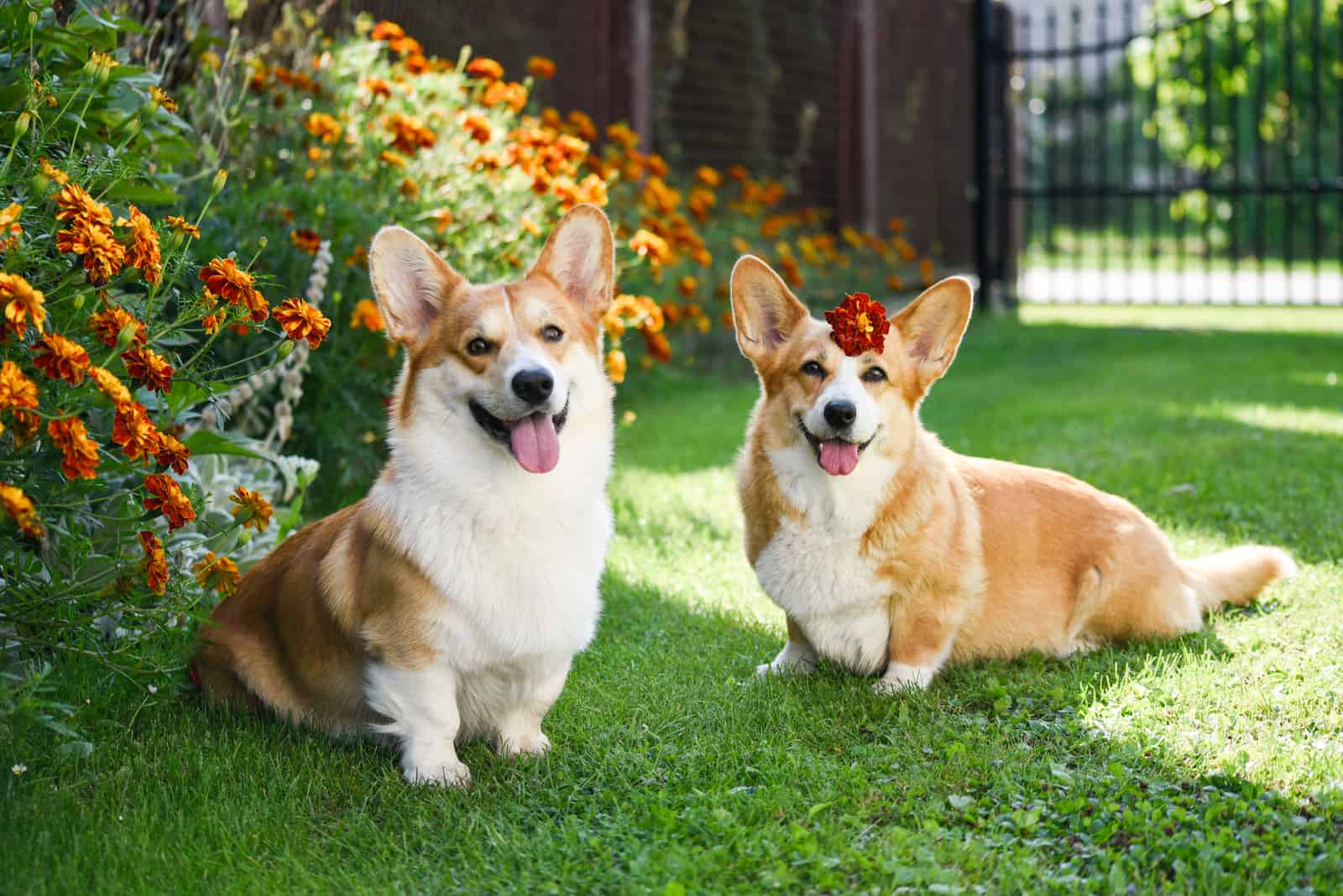
As we’ve seen, Corgis come in different colors, just like many other dog breeds. Kennel clubs around the world, such as the AKC, set the breed standards that determine what colors are acceptable, and most breeders tend to stick to these.
According to the AKC, Red Corgis can come from either breed, although the standard states that the Pembroke Corgi should be red, and the Cardigan Corgi should be red and white.
If you aren’t fussy about having a purebred dog, you can find red Corgi mixed breeds, like those with Poms, Shih Tzu, Boxers, Saint Bernard, German Shepherd, Great Dane, Husky, Golden Retrievers, Shiba Inu, Labrador, or Australian shepherds, but these would not be accepted at dog shows.
That coat, whatever the color, will need brushing at least once a week and probably more so in the spring and summer months. And they will shed a lot! So no, they are not hypoallergenic!
The red coloring may owe some of its popularity to the Queen of England, Elizabeth II, as this has been her color of choice when it comes to her beloved Corgis for many decades. However, how the red coat came about has little to do with royalty and everything to do with genetics.
Whatever the breed and however colorful the coat, just two pigments are responsible: eumelanin (black) and pheomelanin (red) which are both forms of melanin.
These pigments react to different genes to provide variations in color and shade. As an example of this, sable, tan, and fawn coats are controlled by the red pigment (pheomelanin).
There’s a lot of confusing and contradictory research available regarding dog coat colors and how they can affect temperament and health. Much of this is vague and inconclusive, but some studies seem to suggest that our opinions of particular dogs can be influenced by their coloring, as we make assumptions about their personality.
It should be stressed that there is no foundation for this theory and that a red Corgi will not differ greatly in temperament from one of any other color.
What is more likely is that coloration can be linked to certain genes present in the parent dogs, which can have an effect on health if passed on to the pup. However, even this research needs much more work before we can draw any useful conclusions. It’s fair to say, then, that your red Corgi won’t suffer from any health issues directly related to the color of its coat.
However, this doesn’t mean that the Corgi is without its share of health issues.
What Health Problems Do Corgis Have?
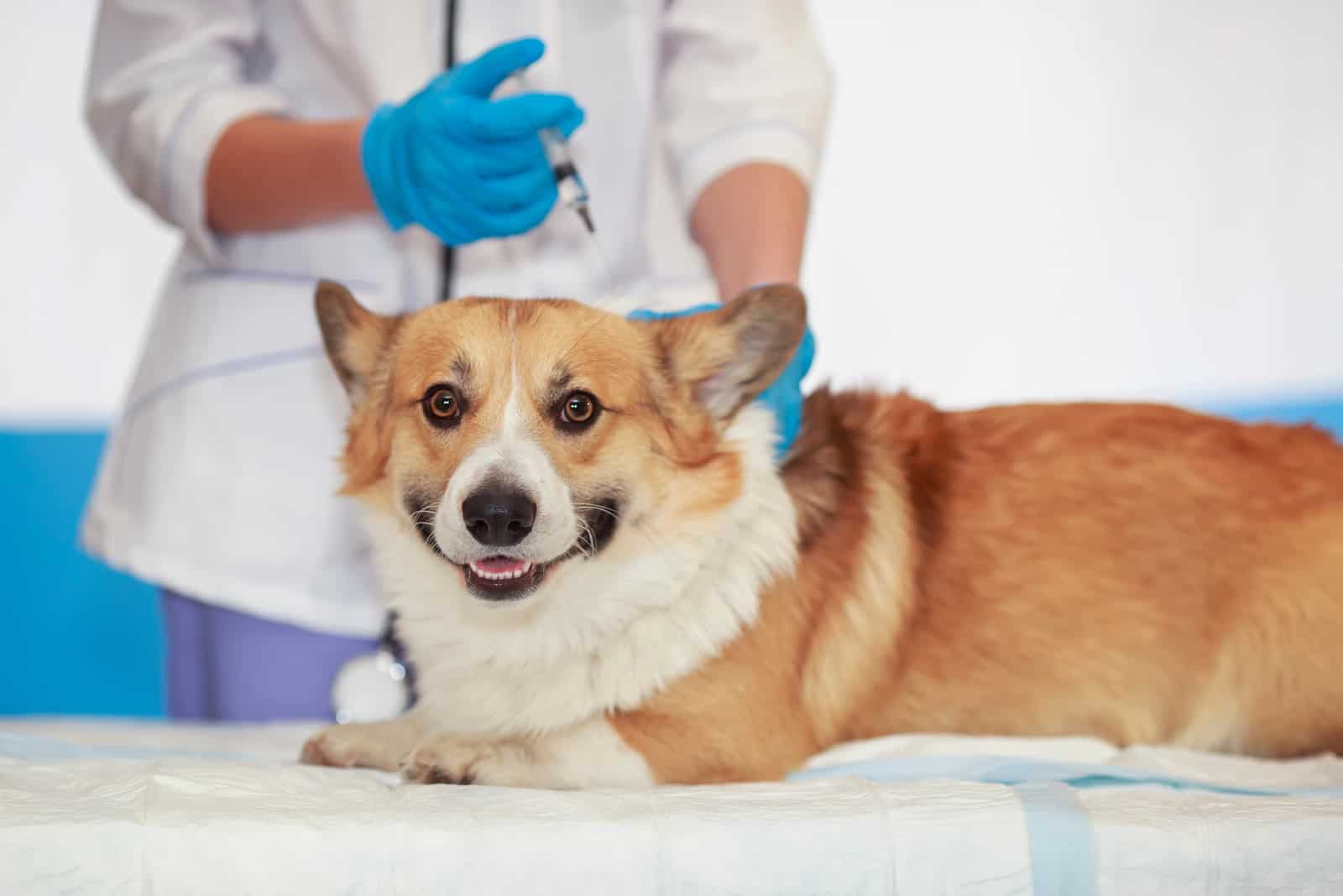
The Corgi dog’s distinctive short legs and long back make it particularly prone to spinal problems, such as intervertebral disc disease (IVDD). This condition, which is common to dwarf breeds*, is treatable, but it can lead to a loss of limb function and incontinence in severe cases. When it reaches this stage, spinal surgery is usually necessary.
*The gene that gives Corgis their shorter legs is itself a condition known as achondroplasia, and while technically not a health problem, it does contribute to other complications.
Aside from this, you should be aware of the following health problems that are commonly found in Corgis:
• Hip dysplasia – the ball and socket joint are not properly formed, causing the bones to grate, which often leads to arthritis.
• Degenerative myelopathy – another condition affecting the spinal cord that gradually causes loss of use of the back limbs and, eventually, paralysis.
• Progressive retinal atrophy – a group of degenerative diseases that can result in blindness.
• Urinary stones – also called bladder stones, these occur when the dog’s diet includes too many carbs such as grain or potatoes.
• Cardiac issues – mostly linked to obesity. This can usually be managed through diet and exercise.
• Epilepsy – seizures can be so mild that you’ll miss them or severe enough to be distressing to witness. This condition can be inherited but can also be triggered by environmental factors.
• Von Willebrand’s disease – this blood disorder is similar to hemophilia, where the blood doesn’t clot properly. This can lead to serious blood loss if the dog is injured or undergoes surgery. You may notice that your dog has nosebleeds or spots of blood on its skin or tips of the ears or that its gums bleed. There is no cure, but the condition can be managed using various treatments and by avoiding any drugs that thin the blood.
These are a few of the more common problems, and while it might seem alarming, you shouldn’t be too worried. For a purebred dog, they are generally healthy and have a lifespan of between 12–15 years.
You can increase the chances of having a healthy dog by only buying from reputable breeders who run a program of genetic testing and screening. Then you need to do your part by providing a healthy diet and plenty of exercise.
Summing Up The Red Corgi
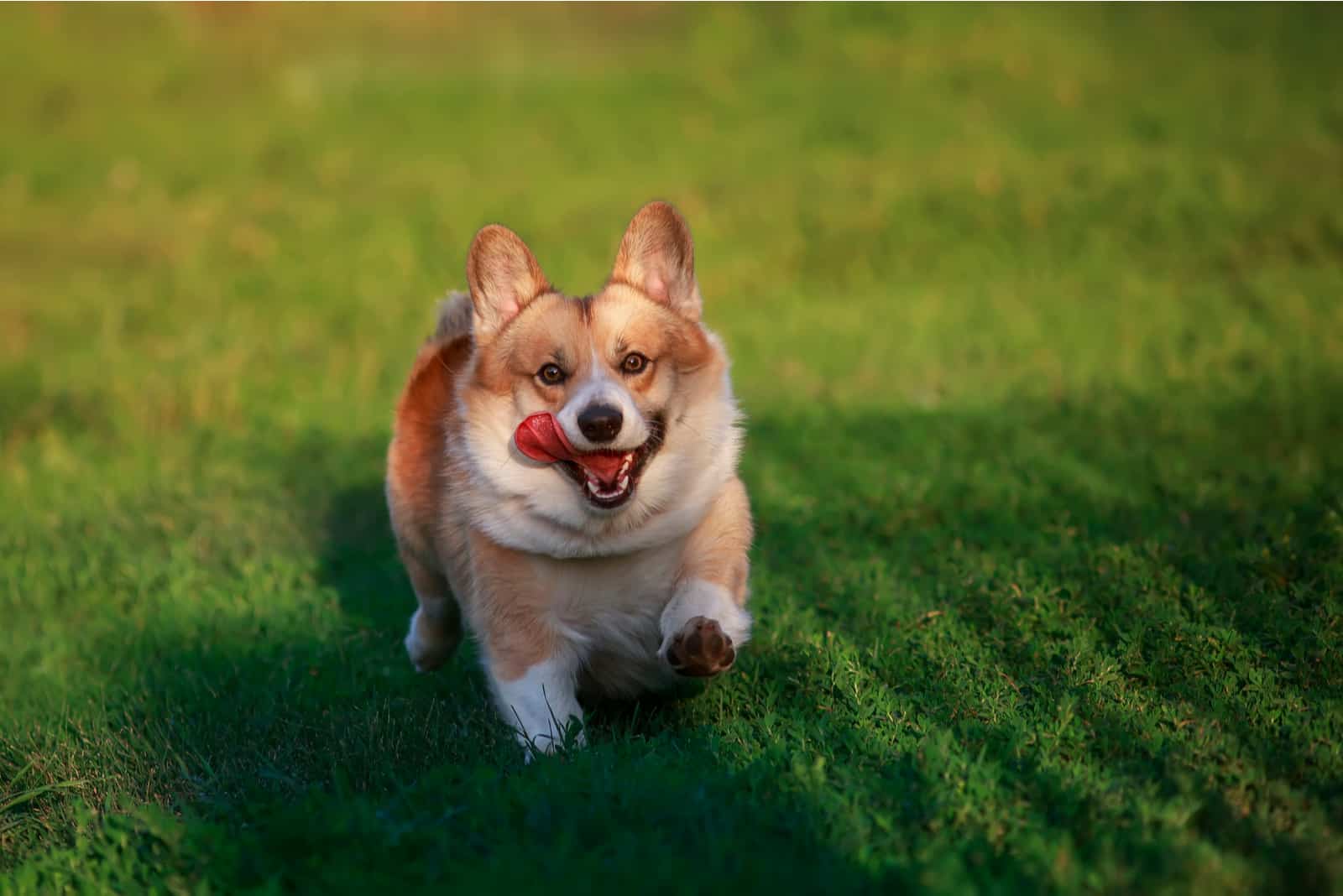
Alert, energetic, and happy, this adorable rascal will keep you on your toes. They are highly adaptable and will fit into your lifestyle quite easily, but be prepared to keep them busy to cut out any bad behavior.
Although they’re small dogs, they need a bit of space to play, and they won’t take kindly to a couch-potato life, nor will they thank you for leaving them at home for any length of time. They will show their displeasure by barking excessively and may become destructive.
They can be easy to train but will need a firm hand at first to discourage any stubbornness. Besides training, you will need to get them used to other dogs and pets through early socialization.
They are great with kids, but bear in mind that a Corgi puppy might not like being chased by small, screaming children. The herding drive in their genes might cause them to nip, so be sure to train your kids as well as your dog!
They will be your constant companion and will actively seek your company. You’ll know if they get bored, as they’ll start herding your kids or pets. A good way around this is to have playtime that includes some kind of herding game that satisfies their natural instincts and intelligence.
A good walk twice a day should also meet their exercise needs and reduce the chances of obesity, a common problem in older dogs regardless of breed.
As always, good quality dog food (whether commercially made or homemade) is recommended to ensure that they have a healthy diet.
Corgis of any color make excellent family pets, but the red Corgi has secured a special place as a dog that’s fit for a queen.
